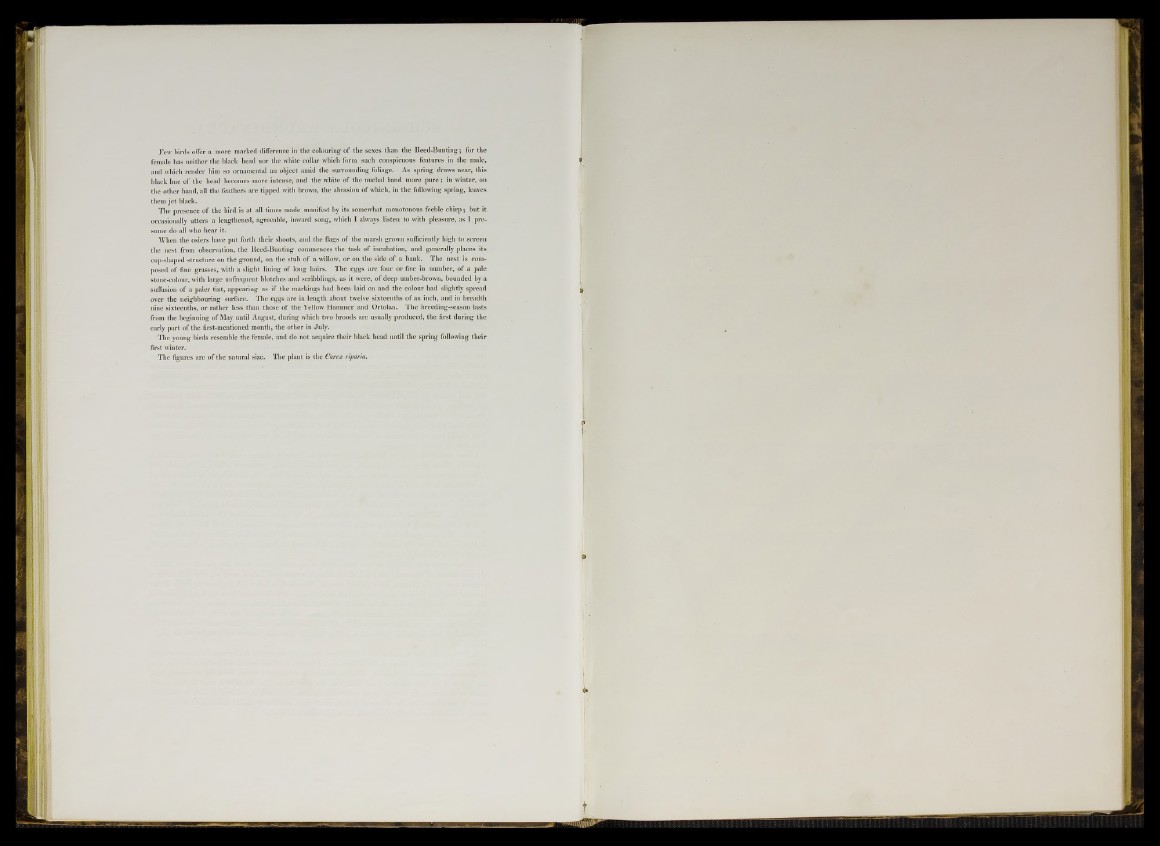
Few birds offer a more marked difference in the colouring of the sexes than the Reed-Buuting; for the
female has neither the black head nor the white collar which form such conspicuous features in the male,
and which render him so ornamental an object amid the surrounding foliage. As spring draws near, this
black hue of the head becomes more intense, and the white of the nuchal band more pure; in winter, on
the other hand, all the feathers are tipped with brown, the abrasion of which, in the following spring, leaves
them je t black.
The presence of the bird is at all times made manifest by its somewhat monotonous feeble chirp; but it
occasionally utters a lengthened, agreeable, inward song, which I always listen to with pleasure, as I presume
do all who hear it.
When the osiers have put forth their shoots, and the flags of the marsh grown sufficiently high to screen
the nest from observation, the Reed-Bunting commences the task of incubation, and generally places its
cup-shaped structure on the ground, on the stub of a willow, or on the side of a bank. The nest is composed
of fine grasses, with a slight lining of long hairs. The eggs are four or five in number, of a pale
stone-colour, with large unfrequent blotches and scribblings, as it were, of deep umber-brown, bounded by a
suffusion of a paler tint, appearing as if the markings bad been laid on and the colour had slightly spread
over the neighbouring surface. The eggs are in length about twelve sixteenths of an inch, and in breadth
nine sixteenths, or rather less than those of the Yellow Hammer and Ortolan. The breeding-season lasts
from the beginning of May until August, during which two broods are usually produced, the first during the
early part of the first-mentioned month, the other in July.
The young birds resemble the female, and do not acquire their black bead until the spring following their
first winter.
The figures are of the natural size. The plant is the Carex riparia.